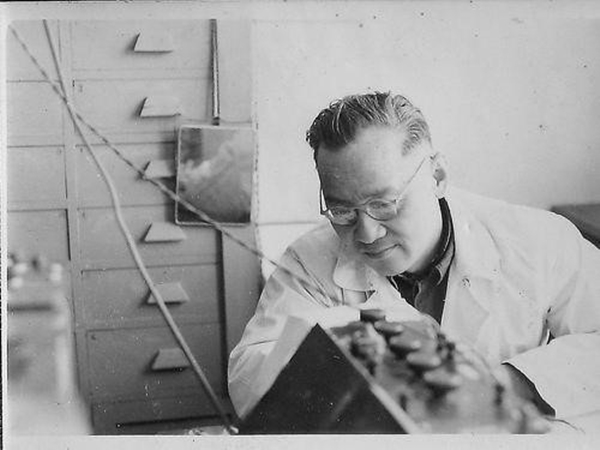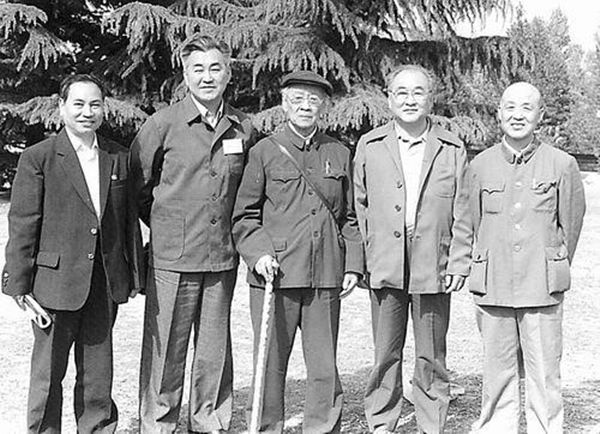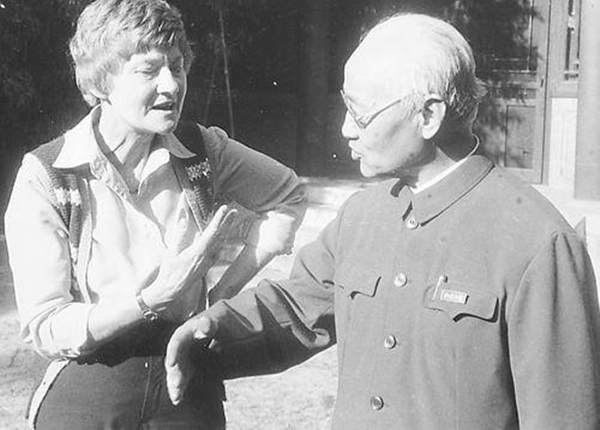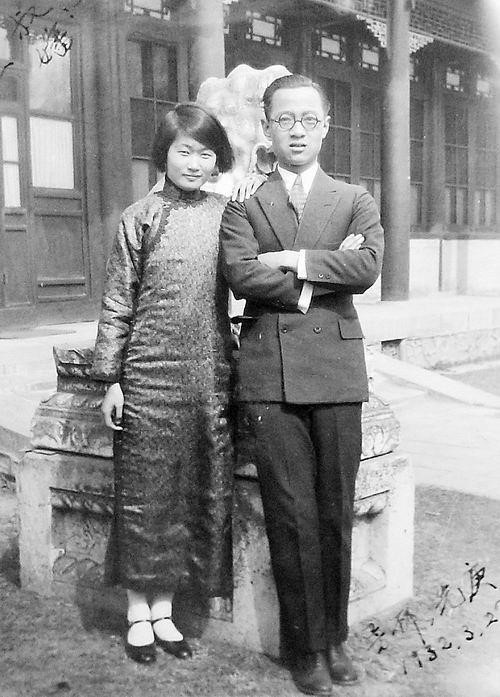Zhou Xiangeng: founder of the ‘Chinese brand of psychology’

Zhou Xiangeng is a famous psychologist in China. [Photo/mmcs.org.cn]
Born in Anhui province in 1903, Zhou Xiangeng pursued further education at Stanford University in the United States at the age of 22. His fascination with psychology led him to switch his major to the department of psychology, thus embarking on what would become a lifelong career. As a pivotal figure in Chinese psychology, he founded experimental psychology in the nation and propelled psychological research forward with his groundbreaking efforts. Known for his relentless work ethic, Zhou dedicated 58 years to teaching psychology, mentoring a multitude of psychologists, and significantly contributing to both the inception and advancement of modern psychology in China.
Inventing the 'Four-Door Tachistoscope'
During his master's and doctoral studies, Zhou focused on the perception and reading psychology related to Chinese characters. Chinese characters are an important part of Chinese culture, and Zhou viewed it as the compulsory duty of Chinese psychologists to pioneer the field of Chinese character psychology. When he committed to researching the reading and comprehension of Chinese characters, he encountered a significant challenge — the tachistoscopes available for psychological study were not suitable for his research. It was customary to alter a research topic when limited by the available methods and tools. However, Zhou believed that methods and tools should be tailored to the problem itself, not vice versa.
After overcoming numerous difficulties, Zhou designed and developed the "four-door tachistoscope", specifically for studying the impact of horizontal and vertical typesetting of Chinese characters on reading. Zhou's invention was notable for its self-service capability, convenience, precision timing, extensive reading capacity, and the ability to present material quickly and sequentially — features that surpassed those of all devices used in English reading studies at that time. Owing to his "four-door tachistoscope", Zhou was elected as a member of the Scientific Research Honor Society and won the Gold Key Award.
During his tenure in the US, Zhou maintained a keen interest in the development of psychology in China. He wrote, excerpted, and published relevant papers to introduce China's psychology research to the international psychology community for the first time.
Pioneering experimental psychology
As he neared the completion of his studies abroad, Zhou aspired to return to China and foster the growth of psychology in his motherland. Subsequent to earning his PhD, Zhou returned to Peking in 1931 and assumed a faculty position in the department of psychology at Tsinghua University.
At the outset of his teaching tenure, Zhou underscored the significance of developing experimental psychology courses and psychology laboratories, recognizing their critical role in the advancement of scientific psychology. While teaching experimental psychology, Zhou, alongside his graduate student Mu Naizuo, authored Elementary Experimental Psychology, a compendium detailing the content and procedures of 46 psychological experiments. Published in 1932 by the department of psychology as a textbook, it served a pivotal role in the educational process of its students as China's earliest manual for psychological experiments.
Zhou consistently highlighted the necessity of "practical" research over "impractical" endeavors in the field of psychology. This stance notably fortified the department of psychology's commitment to a scientific approach at Tsinghua University. Due to Zhou's diligent efforts, students in the department of psychology at Tsinghua University benefitted from systematic training in experimental psychology, which profoundly influenced their professional development in their subsequent careers.
Application in practice
Zhou established very early on that psychological research should serve practice. He believed that psychology researches should not only have theoretical significance but also possess practical application value.
In the 1930s, Zhou engaged in the work of the Chinese National Association of Mass Education Movement, investigated the correlation between literacy and age, and proposed the well-known "Zhou Xiangeng Curve".
During his studies in the US, Zhou developed the "four-door tachistoscope". However, he was initially unable to see its application value. Mockingly, he quoted his classmates saying, "It is for my interest in science". Later, while working with the Chinese National Association of Mass Education Movement, Zhou discerned the practical value of his invention and employed it for literacy tests, thus meeting his expectations for the instrument's practical use.
Zhou acknowledged that the colors favored by Chinese people held significant application value for sectors such as advertising, printing, clothing and decoration. Consequently, he and Chen Hanbiao embarked on researches into Chinese color preferences — to provide insights for applying colors in the daily lives of the Chinese, and also to engage with international peers who were focused on similar studies. Zhou disseminated their findings in international psychology journals. Their researches revealed that Chinese students had a preference for white and blue at the time, a possible reflection of the hues found in the Nationalist Government's national flag. Zhou attached great importance to the study of Chinese color preferences. In 1986, he directed students to conduct a study on the color preferences of Chinese students. These twin studies, conducted over more than 50 years apart, have left behind a wealth of empirical data on the changing color preferences among the Chinese populace.
In the summer of 1935, Zhou began to explore how to apply psychology in the Chinese industrial sector. This investigation spanned two years. Zhou and his colleagues toured aircraft manufacturing facilities and interviewed workers, urging their participation in data collection. This survey was one of the earliest instances of industrial psychology research in China and positioned Zhou as a pioneer of industrial psychology within the nation.
Psychological test for the selection of paratroopers
In March 1945, Zhou was invited to participate in a military psychological test presided over by H.A. Murray, the renowned American psychologist and the creator of the Thematic Apperception Test. The test was designed to select elite paratroopers for intelligence and raid missions. Being the leader on the Chinese side, Zhou guided some teachers and students to join the effort, and from a pool of over 2,000 soldiers, they chose 800 as paratrooper candidates. However, due to the cessation of war activities, the paratroopers were not required to carry out their missions. Nonetheless, the test, as an innovative practice that led the way for that era, established a precedent for the utilization of modern psychology in military personnel selection.
This collaboration fostered a strong bond of friendship between Zhou and Murray. In a letter from Zhou to Murray, penned in 1947, Zhou expressed a longing to one day teach a "Chinese brand of psychology" in the US, demonstrating his ambition to cultivate a distinct psychology unique to China.
Passing on his studies
During his 58-year tenure in the field of psychology education, Zhou mentored an array of distinguished students. These included psychologists Cao Richang, Chen Hanbiao, Dun Futang, Xu Liancang, and Zeng Xingchu; biologists Zhang Minjue and Zheng Piliu; and anthropologist Tian Rukang.
Zhou's pen name, "Fu Sheng," was bestowed upon him during his childhood by his uncle, Zhou Liankui. The original Fu Sheng was a renowned historian who lived during the transition from the Qin Dynasty (221-206 BC) to the Han Dynasty (206 BC-AD 220). He is famed for preserving China's historical classic, the Book of History, through committing it to memory and secreting it within walls to thwart Emperor Qinshihuang's vehement campaign against learning. Emulating Fu Sheng, Zhou Xiangeng dedicated his life to safeguarding a number of invaluable historical psychology materials. Zhou, a custodian of knowledge more than two millennia later, stood as a successor to Fu Sheng. Such a parallel is indeed remarkable — what a testament to the enduring nature of legacy!

In April 1989, commemorating the 78th anniversary of Tsinghua University, Zhou Xiangeng and his alumni from the department of psychology gather for a photograph at Tsinghua University. [Photo/mmcs.org.cn]

In the spring of 1980, Zhou Xiangeng meets with Mrs. Angela Custro, an Australian psychologist. [Photo/mmcs.org.cn]

In 1932, Zhou Xiangeng and Zheng Fang are photographed in front of the I-shaped Hall at Tsinghua University. [Photo/mmcs.org.cn]








